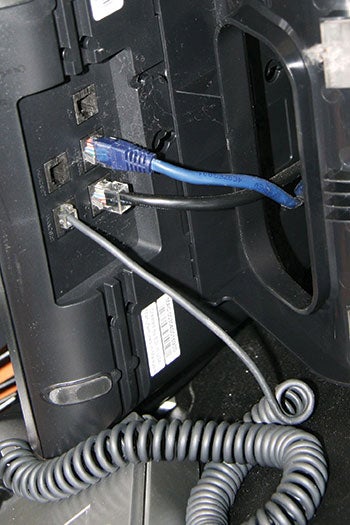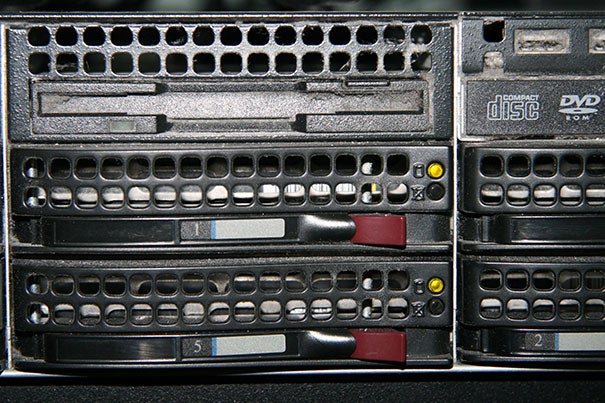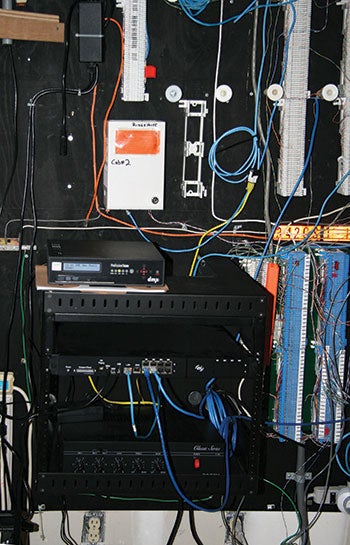Open telecommunications
Without communication, the foundation of a health care facility’s ability to support uninterrupted patient care crumbles. From verbal codes to the technological means of delivery, a health care facility must be able to trust its communication system.
Hospitals and health care facilities must ensure a robust, reliable telecommunications network to support every form of communication. From digital data access and voice networks to mobility solutions, facilities must strategically integrate each form into its overall operational plan.
The best way to ensure a reliable telecom network is to fully audit your existing telecom system. For an accurate audit, there are five critical aspects every health care provider must consider to ensure that its communication networks are primed and ready for maximum efficiency.
1. Equip data networks with enough bandwidth. Health care has never before been so Internet-dependent. From smartphones and tablets to Web-supported electronic health records (EHRs), the Internet is driving the future of medicine. As the health care industry’s digital footprint grows, its basic supporting infrastructure — bandwidth — must grow with it.
As one of the most critical components of a telecom network, failing to invest in enough bandwidth, or to prioritize bandwidth provisions properly, will result in an overload of data fighting for a limited space in its thoroughfare. This can result in poor download speeds, errors, jitters, latency and dropped packets — all of which can be detrimental to a high-functioning data network.
 |
| Photo courtesy of RCG Voice over IP systems are typically included in the first order of bandwidth within a QoS template. |
Preventing this digital traffic jam begins with assessing your data needs. Though each individual facility will require a different bandwidth depending on the intensity of its Web-driven data usage, every facility must define its critical data applications. These are the Web-intensive applications that must be fully functional 100 percent of the time and should be given top priority on a Quality of Service (QoS) template — a hierarchy for bandwidth allocation.
By properly configuring your QoS template within your data circuit, all data applications will be assigned tiered priority for bandwidth usage, with the most critical designated for the first order of bandwidth. Most likely, these applications will be those directly related to your most essential communication, such as a Voice over Internet Protocol phone system, or those that directly affect patient care, such as medical imaging.
It’s also important to consider the future needs of the health care facility. What does its growth look like? What Web-dependent technologies is your IT team considering for future investment? Having a data road map for the next three to five years, will help you know how to plan for future growth. It’s important to make sure data bandwidth is scalable now and well into the future, so that you can quickly adapt to your evolving telecommunication needs without major construction or contract renegotiations.
2. Examine your backup network strength. Medical data are some of the world’s most protected and valuable information and should be treated as such. A health care facility’s data must always be staunchly protected and able to withstand unexpected server outages, human errors and natural catastrophes. Redundant data networks, or backup services, can be the defining technology to your facility’s longevity.
Most of a hospital’s backup techniques are governed by regulatory compliance, so make sure that your supporting network infrastructure is built to support the extent of your backup requirements as well. Often, your data will be sent through a telecom network to a data center hundreds of miles away.
To keep backup networks efficient and resilient, facilities should consider the size of their backup data, bandwidth availability and minimal latency during file transfer. Some hospitals could be transferring multiple gigabytes of data every day across hundreds of miles to their off-site locations. If the bandwidth is too small and the data’s deployment schedule non-incremental, your backup network will become bogged down with latency, preventing a reliable and timely system for securing backup data.
It’s also important to test your backup restoration on a regular basis to make sure your network is fully operational. We see less than 2 percent of businesses that have tested restoration off backup tape, but it is critical to provide assurance that your data be harvested and used when you need it.
3. Support voice services. Telephony can be seemingly basic, but voice services should not be an afterthought for a health care facility. Facilities first must examine their current voice architecture to ensure sufficient voice lines to support a seamless flow of communication. Accomplish this by answering the following questions.
- What is the daily volume for all inbound and outbound calls?
- What areas field the most traffic?
- Are any inbound calls being dropped or blocked due to volume?
- Are there old voice lines in the network that aren’t being utilized?
- How many fax lines are needed?
 |
| Photo courtesy of RCG A hospital's formal disaster recovery plan may include a separate backup power supply strictly dedicated to the phone systems. |
Once you have these answers, consider the return on investment (ROI) of your current infrastructure. Adding or arranging your voice lines to fit peak traffic patterns under your current system prevents major infrastructure overhaul. Your facility also may benefit from Internet Protocol telephony, such as Session Initiation Protocol (SIP) trunking, which allows voice communications to operate over data rather than a traditional phone line.
If you need to add lines to ease the flow of voice traffic or connect your facility’s telephone system to other sites, utilizing SIP trunking eliminates the cost of Basic Rate Interfaces and Primary Rate Interfaces and does not require a public switched telephone network to add additional lines, thus providing a large amount of flexibility and scalability for a minimal price.
Beyond voice architecture, health care facility managers should ensure that these lines can remain open during emergencies. Critical redundant features such as call redirection and enhanced 9-1-1 should be installed and effective. All hospitals should have a formal disaster recovery plan in place for their telephone system, which may include:
* backup cellphones on each floor or every nurses’ station
* analog lines that can be accessed on an emergency basis
* a separate backup power supply strictly dedicated to the phone systems
4. Deploy telecom advancements. Health care providers should look to the telecom industry for the latest generations and innovations of communication technology.
For example, unified communication (UC) systems have matured into sophisticated and secure avenues for both internal and external collaboration through various mediums, such as videoconferencing, data sharing and unified messaging. Additionally, as EHRs become increasingly standardized, mobile technology has added both internal and patient-facing efficiencies, such as the use of tablet kiosks to onboarding patients.
Telecommunication lends itself well to telemedicine. Direct communication links between hospitals and independent providers or networking doctors across the globe can make the vast expanse of medical care within reach of every facility and patient.
 |
| Photo courtesy of RCG Voice over IP systems are typically included in the first order of bandwidth within a QoS template. |
When adopting telecom advancements, facilities must predetermine their impact to existing networks. For example, UC solutions require more bandwidth than basic solutions. There also may be instances, such as a point-to-point connection or a Web-based e-health patient service, in which data networks as they currently exist are unable to support a telemedicine system. For example, some telemedicine applications require their own private, high-speed network to receive desired results.
Bandwidth, circuitry and security all may have to be revamped, so be sure this factors into your overall budget and expectations when deploying new technology.
5. Secure mobility across all platforms. Physicians, pharmacists and other health care staff are rapidly adopting mobile technology. In fact, according to health care research firm Manhattan Research LLC, 72 percent of physicians used tablets last year. This year, nine in 10 health care providers will use smartphones, according to a report compiled by medical app company Epocrates Inc. Although these technologies ease data input, the “anywhere, anytime” aspect of mobile platforms makes sensitive data vulnerable to external and guest networks.
Ideally, companies should provide mobile devices to their staff. This maximizes an organization’s access and control over its wireless network security and device data security. If supplying devices is not feasible, it is crucial that they deploy mobile device management (MDM) software. MDM software tracks, monitors and manages data and applications used by all facility staff. Many are specifically coded for HIPAA compliance and allow a remote data wipe if a device is lost or stolen. They also can lock down certain applications when you’re in the hospital.
By the same token, health care facilities must provide a robust security foundation on their wireless network. This should include the latest firewalls and Wi-Fi Protected Access 2 encryption. Facilities also should track who has access to its primary network where sensitive data is stored. Consider investing in multiple layers of authentication to access the network to ensure that only the selected employees have entry.
These five essential checkpoints are only the tip of the iceberg when it comes to operating a fully efficient and reliable telecommunications system with the highest ROI. As a best practice, managers should collaborate proactively with their telecom providers at least twice a year to ensure that all issues and new technologies are discussed and that your facility is fully equipped for seamless communication.
Eddie Hooper is director of carrier services for Resource Communications Group, a single-source telecommunications provider based in Franklin, Tenn. He can be reached at ehooper@myrcg.com.




